
- All Info
- Reviews (24)
- Q & A (0)
- Videos (2)
- Photos
etrailer Trailer Bearings Races Seals Caps - 382A
- Races
- Standard Races
- 10000 lbs Axle
- 9000 lbs Axle
- 3.813 Inch O.D.
- Bearing 387A
- etrailer
- Race 382A
Race provides smooth surface for bearing to roll on inside of trailer hub. Works with 387A bearing. Replacement part uses industry-standard number.
Features:
- Outer diameter: 3.813"
- Matching bearing (sold separately): 387A
382A Replacement Trailer Hub Race
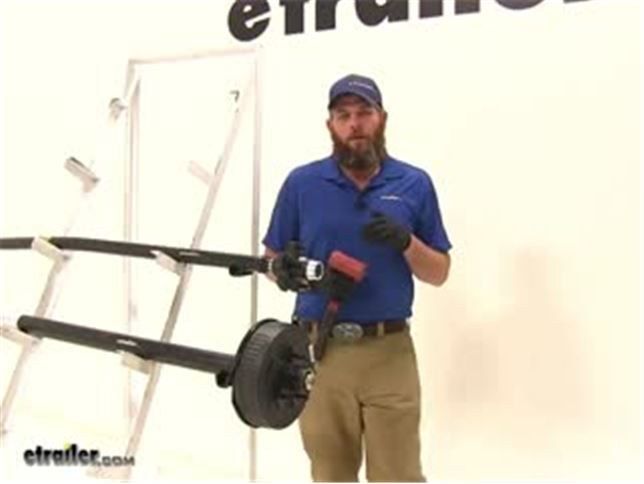

Videos are provided as a guide only. Refer to manufacturer installation instructions and specs for complete information.
Video Transcript for Trailer Bearings Races Seals and Caps Rebuild
Speaker 1: Today we're going to take you through the rebuild process on a couple of hubs. We've got an idler hub, and here we've got a hub and drum assembly. Works with electric rigs, but this can also work for just standard discs, if you've got a disc brake style setup.Basically what we're going to show you is how to get all of the bearings out. How to remove the seal. How to remove the race's if they're damaged, then get them replaced in the proper manner. We'll show you how to use an easy loop hub, which we have here.The first thing we are going to need to do is, get the grease cap off the end.
It can have either a rubber plug in it like this one does, or it can be a solid metal cap.These are pressed fit in there, basically by tapping on them on the back side. To remove them, a deadbolt hammer is typically what we're going to use. We're just going to start tapping as we go around. You'll see a little separation start right here, and slowly it'll work it's way off.Now the next step's going to vary a little bit depending on your axle setup. Do you see this is going to have a keeper that goes around the nut.
And that prevents that from being backed off, or removed. A lot of times you'll have a castle nut, which will have just little tabs that stick off, and there will be a cotter pin that passes through it. Just depending on your application, you need to get the keeper for the nut off. This style we just kind of pry out. A cotter pin you would just remove of course.Once we have that off ...
We'll start to take off the nut here, and the washer that's in behind it. Now yours should look a whole lot more dirty than this. There should be a lot of grease packed in, and through the hub, this one's brand new. We thought it'd be nice to show you the components before the grease was on .. Of our washer that comes off.And then here we're going to have our outer bearing.
Continue to pull that. We're gonig to have our inner bearing here. That sits in the backside of the hub. And we didn't put it in yet, we will show you how to put it in. But a seal would typically be covering the backside here. We'll show you how to use a seal removal tool, or another tool. To get that pried up and out. To get an access to that inner bearing.Now for a drum style like this, that process for disassembly is going to be just the same. One thing to keep in mind if you're using a disc brake setup. You'll have to remove the caliper before the disc is going to come off.Now once we have the spindle exposed, as we said this is going to be really greasy. We want to get all the grease removed, and the first thing we'll do is inspect it. We want to make sure that it looks just like what we have here. Everything's nice and smooth. We don't see any kind of discoloration, or any marring on the metal. Indicating that our bearing's got hot.If you do have any of those symptoms, at this point it's time to replace those bearings. You don't want to repack them. Get new bearings, and put in there. You might have a bearing that's come apart in here. Another surface to ensure is in good condition, is where your seal is going to go. That helps seal all the grease inside of our hub. With a damaged or broken seal, that grease is going to seep out. Either out of the hub, or in this case into our brake assembly.Now if your axle has brakes, we're also going to check the disc. Make sure it doesn't have any issues, or your hub. And this is going to be a hub and drum assembly. The brakes are going to ride on this machine surface. You're going to check that for signs of excessive heat, discoloration, or cracking. And this is our magnet surface. We'll check that surface for the same issues.Now inside the hub regardless if it's a disc brake, it's a drum brake like this. Or just a standard idler style hub. You're going to have an outer race. Would be right here, it's a small tapered piece of metal your bearing sits in, and rotates on. That's basically the outer portion of the bearing.You have the same thing here on the backside. This is called the inner race. Now if those show any signs of wear, overheating, or cracking. Those are also something we'll need to replace, which we'll show you how to do in just a minute.Now, with your brake assembly exposed, if you do have electric brakes like we have here. It's a good idea to check all the components for wear, cracking, maybe missing pieces. Check your pad thickness to make sure those are in good shape. Basically if you have a non working brake assembly and you put everything back together, you're just going to have to take it apart and do it all over again to get back to the brake assembly. This gives you a really good option to be able to change them out.And most applications are going to use a four, or maybe a five bolt flange to hold them in place. And you'll just remove the lock nuts, or sometimes you'll have a hex nut with a lock washer. You want to remove those, and then simply slide your assembly off after you cut the wiring.The friction material itself should also be checked for any kinds of cracking, or overheating. If you have any grease inside the system at all, it's likely it's gotten on those pads. It's a good idea to get those changed. Now as far as the removal of the races go, it's going to be just the same whether we're using an idler style hub like we have here. A drum brake like we have here. You can basically see where the idler is, here in the middle of the hub. It's going to go all the way around there, and we just have this extra material here to provide our braking surface.Now if you're doing a disc brake style job again, it's going to be just the same here with the races living inside of the actual hub portion. You'll just have the discs there for the brakes to make contact. We're going to use this little bit smaller one, it's a little bit easier to manage to show you how to get these out. We've talked about where the races are. The outer here, the inner being closer to the inside, but on the backside of the race there's a little lip. That lip's meant to stick out just a little bit further than the hub, and provide us an area to put our tool on, and help to drive that out.If you look all the way through there on that inner race, you'll see that little lip that sticks out just from the hub slightly, and it gives us enough area to use our tool on. Now generally to remove these you're going to use a punch, similar to this. Some guys will use a screwdriver. Or a piece of pipe. If you have a piece of pipe that's small enough to fit inside of that diameter, you can take that down through and allow it to rest on that lip.Use our punch, and then just need a hammer. And we'll start working that out. We're going to tap all the way around. Kind of equally, and evenly apply the force to get it to come on out of the bottom for us.You can see now as it starts to come out there's going to be a little gap created between the hub and the race. And we can just keep going, bringing it on out. Then you can inspect the inside of the hub surface there. Make sure no damage or anything has occurred, and repeat that same process for the outer race if you plan on removing and replacing that one.Now in the outer flat edge, you can see we're going to have our tapered edge on this side. If we roll our race over to the flat side, typically there's going to be a manufacturers part number on there. That will help you identify which race it is, that you need to go back in your system. If those are rubbed off, worn off, if you can't read them. You can measure the outside, to outside diameter of the race here. It's a good idea to use a micrometer to get it exact.Now here's your basic micrometer. And again, the outside of the race is what we're going to need to measure. You want to go . I set the thickest point there. Looks like this one's going to be about 1.98. That's going to be the measurement you'll want to supply.Now while we've got this out, let's also look at the proper way to measure our bearing. Instead of the outside for the bearing, we need to measure the inside diameter. That's going to be pretty simple. Let's pull that out, find the largest measurement we can. Which here, looks like it's going to be 1.03. With that information, we'll be able to get the correct bearing, and the correct race, so they'll fit together properly and make a full bearing kit for us.Now here's the race, we're going to show you how to get this put back in. Basically just going to press fit inside of our hubs. We need to get it down on there. Kind of like that. And you'll have a couple options. A lot of times you're going to see do it yourself or at homer, just going to use a wooden block. Just place it on there. That's going to get you started, but at that point you'll struggle in getting it to go all the way down into it's seat.Now to take care of that problem, there are several seal drivers that are available. Seal and race drivers that are available out there on the market. It's designed to fit down inside of our race, inside of our hub and get it down there where it needs to go. This is part number ptw83020, has several different sizes, even if you have multiple trailers it's going to do the job.Now the side with the angle on it, is designed to fit down inside of our race. If we use the other side, that's going to be for driving your seal into place. Just want to hold it, and take it on in with your hammer. You'll see, you just want to insure that our race is all the way up against that line on the hub where it's supposed to mate to.Now when it comes time to pack your bearings you're going to have several different ways of doing this. You can just use your hand, is the traditional method. That's going to be the method probably reserved for the very occasional trailer work kind of situation. If you do it once or twice a year, probably get away with it that way.Next you would go to a, kind of a sandwich funnel style almost. If you look inside of there, you can see the bearing. It's located between the two pieces. Just use a grease gun. Start filling that with grease, and that's going to fill our bearing for us. And the third, with this one you're just going to place your bearing down and in. It should be pretty close to center. And then we've got our cone her that's going to go down and secure that.Now I think this style, wastes a little bit more grease than what this style will. This has a dust cap. You can see, you can keep your grease in there, put your dust cap on there and save it for later use. This will be if your going to do it every couple years. And this particular style would be if you're a more regular user.Let's start by showing you how to use a bearing packer. Similar to this. Again, we've just got our grease inaudible 00:11:07 here on the top. And then just slowly start to fill it. Now I like this style quite a bit. I think even regular users might enjoy it, because you can get a really quick visual look at that bearing. You're not going to have to overdo it, or have to much grease.You can kind of see in there now, we're starting to get grease to come out of it. Couple more pumps, we'll be good. You can see we've got grease coming out all the way around. Where all of our bearings are. Got a little bit of excess there. Just take that around the outside of it. And then we should be able to lift it off. And now you can see what we we're talking about. Just a little bit of excess there, that you're just going to wind up wasting.Now we'll take our bearing, we're going to place it right down in our race. And then we'll cap off the back with our seal. Right now our seal's going to fit in just like our race did. It's going to have a little bit of a pressure fit to it. Now very often in this situation, I see people using the four by four method. Kind of here, just placing that on and tapping it. As an option though, if you do have one of these. You can see that's designed to fit right on the top of the seal. And help drive it in.The biggest thing here is, just going to be getting it driven in squarely. You can see, this side's in a little bit further than this side. I'm going to start this side first. Now since we didn't have the opportunity to show you before, we're going to take a look at pulling a seal. Now this is a seal puller, we carry this on our website part number ptw1219. This is meant to hook underneath the seal. And then you kind of pull up on it, and just like our race you'll have to work all the way around that edge. Just bringing it out a little at a time.If you don't have that available. Another option would be a screwdriver. You just kind of get that under the seal, and turn it. And see, that'll allow you to also pop that out. We've taken care of our race. Our inner bearing. Our seal. The last component, before we put our hub back in place is going to be our outer bearing. Now with this bearing, I'll show you the hand packing method.This is definitely . Slightly dirtier method than the bearing packer. When we get grease on our hand we want to look at the larger side of the bearing. This is the smaller side. We have a larger side In between the inside and outside there's a gap. We can see our rollers in there. We want to grab that, and use that gap and shove grease inside of it. Now this is going to take a little bit, you want to work in the same spot until you get the grease pushed all the way through. We can see on the top there we've got a little bit starting to come through.And once we push it in the bottom, and you see it start coming out the of the top in those little drips, it's going to indicate that, that section's fully packed. Just need to work all the way around their outside edge now and do the same thing. Alright, once that's all the way around . The bearing will be ready for use.Now one more thing I like to do. We can see our inner bearing there, and our outer bearing. Well between the two, got a pretty big gap in there. If you'll take a . Pretty good amount of grease. We're just going to go all the way around. See how we can go all the way around the inside and just line that really well. The more grease we have in here, the less chance we have of any moisture getting in there, which can cause corrosion, rust, pitting. Pretty much things we do not like when it comes to bearings, races, and hubs.Put plenty of grease in there. And then this one does have the easy lube spindle, that'll even fill it in more. Now we can get our assembly slid on. I like to keep my thumbs on that outer bearing, just to prevent it from . inaudible 00:15:28 pushed off there. Now we can put on the original hardware that we removed, in taking off our hub the first time. In our case, we had our washer and our nut.Now most commonly you'll see pliers similar to this being used. We basically want to get that tightened down. Once it's fully tightened down you'll feel some resistance in the hub. We back it off just slightly. That'll give us a little bit more freedom of motion there. Something you don't want however . Is any movement in, or out on your hub. You want to be sure that everything is compressed, and you don't have what's called end play. Which would be the play in and out.Once we've got that set, then you'll put on whatever tight keeper yours came with. Get that put back in place. Now with an easy lube style hub, you're going to place your grease gun on the end, and then you can just fill the remainder of that hub up.Now for your typical applications, you're either going to have a solid cap, or a cap that'll have a rubber plug in it. A solid cap's going to be for an axle without the grease inaudible 00:16:51 here on the end. Goes on there. Just knock it on with your rubber mallet. Same with the one with the plug. Just gives you a removable area there, be able to cap that off.We'll show you how to put that on. Now as alternatives as well, a lot of times on boat trailers and marine kind of situations. You'll see a bearing buddy. This is going to apply a little bit of pressure on the grease, you'll fill it up. This kind of comes out just a little bit. That applies constant pressure on the grease to make sure we don't have any air, or anything like that. Then there is also an oil bath hub available. Now this is going to be for use with seals that are going to be designed specifically for oil bath use. You'll have to change that seal.We're using a double lip seal. There are also single lip seals available. Of course a double lip seal is going to give you just a little additional security. Keep that in mind when you order. But let's get this knocked on there now so you can see how that works. We just want to take the cap, we're going to center it. This is going to be very similar to what we did with the seal. And then just gently start tapping it around the outside. And it'll seep down on there for you.It's really going to be the same thing that you'll do with any of the end caps. Now with this side done, it's a good idea to take care of all the other hubs. Get them all on the same maintenance schedule. And as long as you'll periodically check the grease, take your trailer out for a trip occasionally. Just to keep everything lubricated. It should extend the life of these parts, and give us years of good service.
Customer Satisfaction Score:
97% were satisfied with this product
3% of customers were not satisfied
- Wrong item was ordered
- etrailer mistake
- Product did not meet expectations
Customer Reviews
Replacement Race for 387A Bearing - 382A
Average Customer Rating: 4.7 out of 5 stars (24 Customer Reviews)
Race provides smooth surface for bearing to roll on inside of trailer hub. Works with 387A bearing. Replacement part uses industry-standard number.
Great product and fast service. I will be back I have other trailers and I have told several or maybe even many people about you. Thank you so much These were mostly bearings and seals for a heavy trailer so I don't have any pictures. Take my word for it though with them

They work very well
This place is awesome to order from correct parts first time. I ordered parts about noon and they were on my step the next day.
These guys are great. Best service I have received. No reason to shop elsewhere.
Great buying experience, pricing and fast shipping.
great, it fit perfectly

See what our Experts say about this etrailer Trailer Bearings Races Seals Caps
- Bearing Recommendation for a Dexter 10k General Duty AxleFor the Dexter General Duty 10k axles the recommended bearings that we carry are the inner bearing # 387A, outer bearing # 25580, race # 382A, and race # 25520. We have confirmed with Dexter that these are the correct parts.
view full answer... - Bearings For 10,000 Lb Dexter AxleMy contact at Dexter was able to use your Dexter Axle number 4389878 and Serial number 125263858 to find the bearings. She said your hub uses outer bearing 031-030-02, outer race 031-030-01, Inner bearing 031-019-02 and Inner race 031-019-01. These parts are equivalent to the inner bearing # 387A outer bearing # 25580 and race # 382A and race # 25520.
view full answer... - Replacement Bearings, Races and Oil Seal Used In Dexter Bearing Kit K71-722-00While we do not have a kit that includes everything from the Dexter K71-722-00 bearing kit we do have all the parts that are included with the kit. Inner Bearing # 387A Inner Race # 382A Outer Bearing # 25580 Outer Race # 25520 Oil Seal # 10-51
view full answer... - Replacement Bearings and Seal for Dexter 9,000 Pound AxleFor your Dexter 9,000 pound axle, you will need the Inner Bearing # 387A and Race # 382A, along with the Outer Bearing # 25580 and Race # 25520. The correct oil seal should be part # 10-51, which features a 2.875 inch inner diameter and 3.880 inch outer diameter. These bearings and seal are not available as a complete kit, so they will just need to be purchased individually.
view full answer... - Replacement Bearings For Dexter Model D1012 AxleThanks for the picture! I sent that over to my contact at Dexter and your axle uses the following components: Inner bearing # 387A Inner race # 382A Outer bearing # 25580 Outer race # 25520
view full answer... - How to Pick Out Bearing for 10,000 lb Dexter AxleWe have the bearing part # 387A which is over 2 inches in inner diameter and is seen on 10,000 lb axles but I'd have to know exactly what your spindle dimensions are to know for sure what you'd need. If you can use a digital caliper like the # PTW80157 to get me the exact dimension of the spindle where the bearings and seal ride I'll be able to let you know which parts you need. A very common bearing combo for Dexter 10k axles is # 387A and # 25580. Races needed are # 382A and # 25520....
view full answer... - Bearing, Races, and Cap for 10,000 lb Dexter AxleThe bearings you need are # 387A and # 25580. Races needed are # 382A and # 25520. The oil cap kit you need is part # RG04-300. If you need a seal too you would need the part # 10-51.
view full answer... - Replacement Bearings and Seals for Dexter Axle 10K Axle with Oil BathI can give you a few different options but to know the exact bearings, races, and seals you need for an oil bath on your 10K Dexter Axle you will need to take some measurements on your spindle using a digital caliper or by finding the part numbers on these pieces. Attached is a photo to show you where the part numbers are located as well as where you will need to measure on your spindle. One set of common bearings/seals are inner bearing # 387A (2.250" inner diameter) with race # 382A,...
view full answer... - Bearings, Seal, & Electric Brakes For Big Tex 22GN 35+5 Gooseneck TrailerI was able to find the correct electric brakes, as well as oil seal (which is what I assume you were referring to by wheel seal), and also the bearings for your Big Tex 22GN 35+5 gooseneck trailer. I'll go ahead and list out the parts for you below. - Oil Seal # 10-56 - Replacement Trailer Hub Bearing # 395S & Race # 394A - Replacement Trailer Hub Bearing # 387A & Race # 382A - Dexter Electric Trailer Brake Assembly - Left Hand # 23-438 & Right Hand # 23-439
view full answer... - Replacement Parts For Dexter 10,000LB Trailer Axle On 2019 PJ TrailerYour Dexter axle SN 125272197 came with the Dexter Electric Brake Kit # 23-450-451. It uses the following bearings and seals. Inner Bearing # 387A Outer Bearing # 25580 Inner Race # 382A Outer Race # 25520 Oil Seal # 10-51 Oil Cap # RG04-300
view full answer... - Recommended Brakes, Bearings and Seals for Dexter 10k General Duty AxleI reached out to Dexter and found that your axle is a 10,000 lb general duty axle. The correct inner bearing and race is the # 387A and # 382A, the correct outer bearing and race is the # 25580 and # 25520. For a replacement seal you want the # 10-51. For electric brakes I recommend the Dexter Electric Trailer Brake Kit - Self-Adjusting - 12-1/4" - Left/Right Hand Assemblies - 10K # 23-438-439. These are self-adjusting brakes so there will be no need for manual adjustment. I have attached...
view full answer... - Is Dexter Hub Drum Assembly # 8-430-5UC3 Available in Individual Parts?The Dexter Trailer Hub Drum Assembly - 9K to 10K - 8 on 6.5 - Oil Bath - Non-ABS Drum - After July 2009 # 8-430-5UC3 comes as the complete kit and the hub/drum is not available separately. The bearings, races, seals, and caps are available separately: Inner Bearing # 387A Outer Bearing # 25580 Inner Race # 382A Outer Race # 25520 Oil Seal # 10-51 Oil Cap Kit # RG04-300
view full answer... - Replacement Brake Assemblies for Dexter 10k Axles on Gatormade TrailerWe have what you need! Thanks for the photos. Even though the serial number is torn from the axle tag, we still identified the brakes you need with the Unique ID Number 124394998016 from your 10k Dexter axle tag. I confirmed with my tech at Dexter that you need the Dexter Electric Trailer Brake Assembly - Self-Adjusting - 12-1/4" # 23-450 (left side) and the # 23-451 (right side). These are direct replacements of brakes constructed for your 10k Dexter axles on your Gatormade trailer.
view full answer... - Bearings, Races and Oil Seals For Dexter 10K Axle On a 2018 Big Tex 22GN TrailerWhen you replace your Brakes # 23-450-451 it is a good idea to inspect the bearings at that time. The bearings and races will only need to be replaced if they are damaged or grooved. A visual inspection of the seal will tell you if it leaking or you notice any damage to the seal. Depending on if your Dexter 10K axle is a general duty or heavy duty will decide the bearings and oil seal you will need. If you are unsure you can send me the axle serial number that is stamped in the rear portion...
view full answer... - Replacement Brakes, Drums, Hubs & Bearings For Dump Trailer With 10K Dexter Axles Manufactured 2006Thank you for the serial number as this allows me to confirm all the components installed when the axle was built. For a trailer with 2 of these axles you will need the following components to change out all the parts. The brakes are 12-1/4" x 3-3/8". Dexter Left Electric Brake # 23-450 Qty 2 Dexter Right Electric Brake # 23-451 Qty 2 Dexter Trailer Brake Drum # 9-44-1 Qty 4 We do have the Dexter Trailer Hub and Drum Assembly # K08-288-90 if you want to replace the entire hub as well...
view full answer... - Recommended Kodiak Disc Brake Kit for a Dexter 10K AxleThe disc brake kit I recommend for a Dexter 10,000 Lb Axle is the Kodiak Disc Brake Kit part # K2R1058D11E which will also require the Dexter Oil Hub for 9K to 10K General Duty Axles part # 008-430-03. Please note this setup is designed for axles made after May 2013 with leaf springs so if you have something different please just let me know. The manufacture's date code is listed on the axle tag in the center of the beam. If you don't want to reuse the old bearings/races and seals you'll...
view full answer... - Replacement Bearings and Brake Assemblies For 1998 Dexter 9000lb AxleThank you for the pictures and information of your axle! I called Dexter and your Dexter P12 SLR axle with Serial Number D-423-4057 has a 9000lb axle rating, and uses an 8 on 6-1/2 hub and drum assembly with 5/8" studs like you mentioned. For replacement bearings there is not a kit that has all of the bearings and races but you can purchase them all separately as follows: Inner Bearing # 387A Inner Race # 382A Outer Bearing # 25580 Outer Race # 25520 Oil Seal # 10-51 And Oil Cap Kit...
view full answer... - Determining Replacement Hub And Bearings For Dexter P-12 SLR Trailer AxleI can definitely help you find the correct replacement hub and bearings for your Dexter P-12 SLR axle, but since part of the serial number was unreadable you will need to take a few simple steps to identify which bearings your axle uses. The easiest way to accomplish this is to remove one hub and look for the numbers stamped on the inner and outer bearing like shown in the attached picture of the # L44649. If your bearings are too worn to be able to read the numbers, you will need digital...
view full answer... - What Is the Weight Capacity Of a Dexter D100G AxleThe spoke with Dexter and the code "D100G" tells me you have two 10,000 lb trailer axles. I have attached some parts you may need for the axle below. Dexter Trailer Hub Drum Assembly (After July 2009) - part # 8-430-5UC3 Dexter Trailer Hub and Drum Assembly (Before July 2009) - part # K08-288-90 Dexter Electric Trailer Brake Kit (12-1/4" x 4") - part # 23-438-439 Dexter Hydraulic Drum Brake Kit (12-1/4" x 4") - part # 23-404-405 Inner Bearing - part # 387A Inner Race - part # 382A Outer...
view full answer... - Replacement Hubs and Bearing Parts For a Dexter 10,000LB General Duty Axle Prior To July 2009Your Dexter axle is a 10,000lb general duty axle that was manufactured on 1/31/01. That is all information I was able to obtain from Dexter due to the age of the axle. It will use either the Dexter Trailer Idler Hub # 8-288-3UC1 or the Dexter Trailer Hub and Drum Assembly # K08-288-90 with the Dexter Electric Brake Kit # 23-450-451. If you are looking for a bearing kit you will need to get the following components as we do not have a kit with everything you need. Inner Bearing # 387A Inner...
view full answer... - Replacement Hub Options For a Dexter D1012 With Bearings 387A and 25580Here is your options for a Dexter D1012 with the Inner Bearing # 387A, Inner Race # 382A, Outer Bearing # 25580, and Outer Race # 25520. Idler Hub Prior July 2009 # 8-288-3UC1 Idler Hub After April 2013 # 008-430-03 Hub/Drum Prior July 2009 # K08-288-90 Hub/Drum After July 2009 # 8-430-5UC3 All but the Idler Hub After April 2013 # 008-430-03 include all the bearings and seals. For this you will have to also add the following components for each hub. Inner Bearing # 387A Inner Race #...
view full answer...
Do you have a question about this Trailer Bearings Races Seals Cap?
Info for this part was:



At etrailer.com we provide the best information available about the products we sell. We take the quality of our information seriously so that you can get the right part the first time. Let us know if anything is missing or if you have any questions.





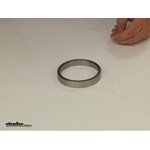





















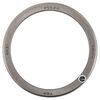
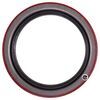





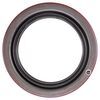
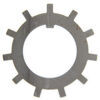












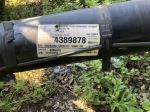

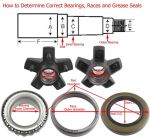
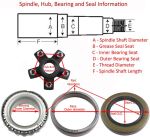
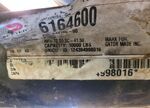
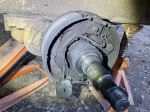
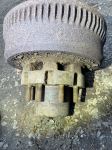
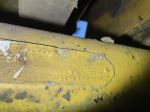
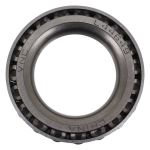
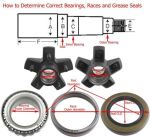
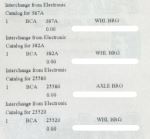
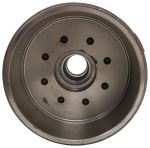
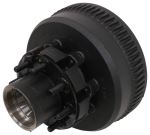
Thank you! Your comment has been submitted successfully. You should be able to view your question/comment here within a few days.
Error submitting comment. Please try again momentarily.